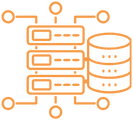How Ginger Nut Deliver
Our training delivery is based on a blended model of one-to-one sessions every 4 weeks, with group sessions, webinars, online courses, video, and additional support as required. This means that our learners have the guidance they need as well as the flexibility to learn around the requirements of their jobs. We find that this approach reduces disruption for the learners and their line managers giving everyone the best chance of benefitting from the training and completing the course.
Delivery of the standard is based around modules consisting of introduction, training, personal study, and observation. To support learning, we utilise Highfield Workbooks and Smart Screen, which are online resources mapped to the apprenticeship. All learners are given access to LinkedIn Learning, including bespoke channels designed to support their apprenticeship and Perlego, which includes full searchable access to hundreds of thousands of textbooks to support study.
The standard is divided into core modules which are as follows:
- Knowing your customers 1 – Different types of customers
- Knowing your customers 2 – Priorities and expectations
- Your Role and Responsibility – Impact of your actions on others, knows the targets and goals you need to deliver against
- Understanding the Organisation 1 – Brand promise and core values
- Understanding the Organisation 2 – Internal policies and procedures
- Regulations and Legislation – Know the appropriate legislation and regulatory requirements that affect your business and your responsibility in relation to this and how to apply it when delivering service
- Customer feedback and Measuring tools – Understand types of measurement and evaluation tools available to monitor customer service levels
- Customer Experience – Understand how establishing the facts enable you to create a customer focused experience and appropriate response and how to build trust with a customer and why this is important
- Systems and Resources – Know how to use systems, equipment, and technology to meet the needs of your customers
- Products and Services – Understand the products or services that are available from your organisation and keep up to date
- Customer Improvement – How to investigate, research and identify ways to improve customer service and how to present ideas to management
Once these areas are complete the learner completes training around additional areas for support and End Point Assessment readiness.
Project Activity and Portfolio Building
Each module covers aspects of knowledge, skills and behaviours and helps the learner build the experience and portfolio they need to successfully complete their apprenticeship.
Gateway and End Point Assessment
Before gateway the collected documents are combined to create the learners’ portfolios. This approach means that learners and tutors ensure that all knowledge, skills and behaviours required are fully tracked throughout the apprenticeship with learners having a clear understanding of their growth in knowledge and related progress.
The End Point Assessment consists of the learner’s portfolio, a practical observation, and a professional discussion.

